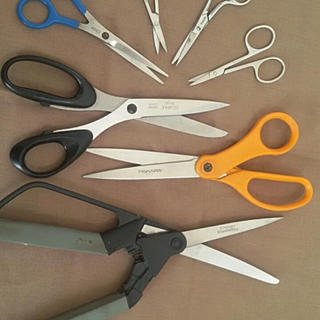A Sharp Knife Is A Safe Knife
- Gabriel Frankewich
- Sep 2, 2017
- 3 min read
Yes, this may seem like a bit of an oxymoron but it is, in fact, true.

A knife becomes dull when constant pressure and use rolls the edge. The type of cutting board you use is one of the biggest culprits. Glass, granite, stone, or other hard surfaces should not be used as a cutting surface. These will roll the blade quickly and you will need your knives sharpened more often. Softer materials such as wood, bamboo or plastic will help prolong the life of your blade and lessen the need for constant sharpening.
Once the edge of your knife has rolled and worn down, it is dull; it is difficult for it to slice through most items. Have you ever tried cutting a tomato with a dull knife? All you end up doing is squishing the tomato, or the knife slides off the skin. That is what you can avoid by having a sharp knife. The blade will slide right through whatever food item you are cutting. A sharp knife reduces the risk of the blade slipping. And just because the knife has a rolled, dull edge doesn’t mean you won’t still get cut if it slips.


Not only should your knife be sharp, but you should have good control and hold the knife correctly. If you don’t have proper control of your knife, there is always a greater risk of injury. It is good to know how to properly hold a knife. The most common methods of holding a knife are the handle grip and the pinch grip. They allow you to have the most control. Even if it takes some getting used to, it is important to learn these techniques.
Also remember to guide the knife with the knuckles of your non-dominant hand, keeping the edge of the blade away from your fingertips.

Let's take this one step further and explain the importance of proper sharpening…
Sharpening using improper techniques can lead to excessive damage. Sharpening on a belt sander or grinding stone can overheat the blade and break the temper. What does this mean? All knives go through a tempering, or heating, process when they are getting made (forged). When a knife is sharpened on a belt sander or grinder, the friction caused by the speed and grit of the belt or stone can overheat the blade. When the blade reaches a certain temperatures, the result is the temper breaking which leads to discoloration and/or micro-fractures which will eventually chip. Don’t get me wrong, using a belt sander does sharpen a knife quickly. But is it worth it in the long run? Also be careful if you use a pull-through style sharpener. It may be decent for quickly honing your edge and straightening out the blade, but it does not sharpen the rolled edge. It removes excessive steel which can also lead to micro-fractures and chipping. The only way a knife can be properly sharpened is on a water-cooled stone (whetstone).
The Blade Doctor has such specialized equipment. The machine used to sharpen knives is water-cooled and runs at a low RPM, ensuring your knives will not get overheated. There is also a unique tool that is used to maintain the proper cutting angle. You can’t do that on a belt sander. Feel free to contact us with any questions.
And remember… The Blade Doctor will Bring Your Blades Back to Life!

















Comments